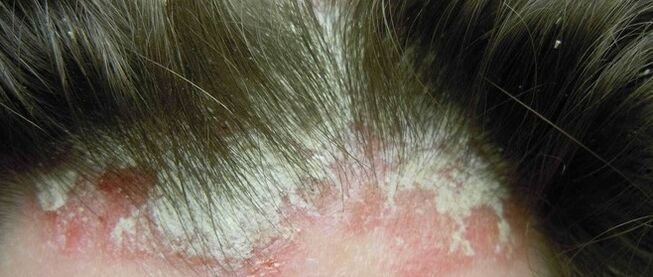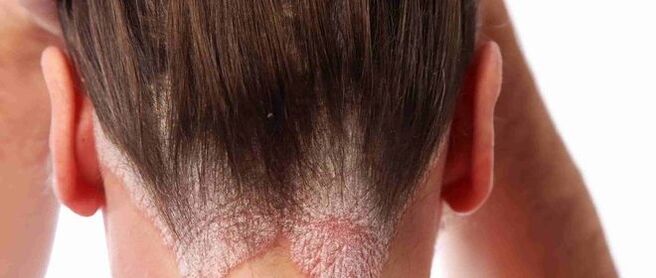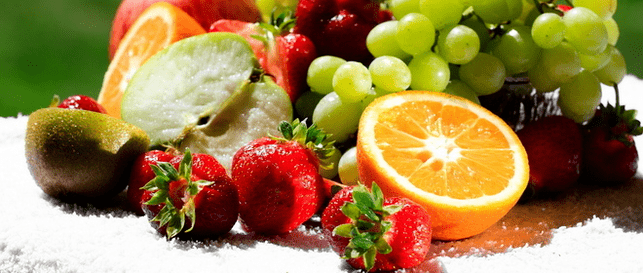Despite how psoriasis looks on the head, this is not a dangerous and not contagious disease indicating hormonal disorders in the body.But it often leads to various psychological disorders, because because of the appearance, a person is in social isolation.

Description
The essence of this disease is the accelerated appearance of new skin cells.The normal cycle of cell reproduction and skin renewal is 3 weeks, and with psoriasis - 5 days.This leads to plaques and crusts.Sick skin has an inflamed appearance and uneven surface.
Such manifestations indicate the first stage of chronic, non -infectious disease, which is characterized by regular exacerbations.It is expressed in the form of rashes on the skin and its peeling.The main foci of the lesion are:
- occipital zone;
- part of the forehead, under the hair;
- parting area;
- The zone near the ears and lobes.
Reasons
The causes of the disease are:
- metabolic violation;
- regular injuries of the skin of the head;
- stress;
- improper nutrition;
- bad habits;
- reaction to low temperatures;
- tendency to allergies;
- long -term administration of drugs in the treatment of other diseases;
- hormonal changes associated with transitional age or pregnancy;
- heredity;
- Dry scalp.
If the disease appears up to 25 years, then it is hereditary in nature, and after 35 - acquired.
Symptoms
At the initial stage, psoriasis of the head has practically no manifestations.It is not visually noticeable and does not cause discomfort to a person.In the future, the signs of the disease become obvious:
- peeling of the skin;
- feeling of light itching;
- the appearance of cracks;
- coarse and thickening of the affected areas;
- The formation of pink plaques.With the progression of the disease, their color changes to red, and then it becomes gray.
Stages and forms

This disease can be classified according to several stages and forms.We give them in the form of a table.
| Form | Description |
|---|---|
| Light | Represented by single foci of defeat with small scales |
| Heavy | The entire skin of the head is inflamed.Large scales are characteristic |
In psoriasis of the scalp, four stages are distinguished, each of which corresponds to a certain symptoms.
| Stages | Description |
|---|---|
| Initial | Manifestations are practically absent.There is a slight peeling of zones located around the hair |
| Stationary | The state of stability is characteristic.Those.Existing plaques do not grow, and new ones do not appear.Inflammatory processes pass |
| Progressive | The active development of psoriasis, the appearance of inflamed foci, the manifestation of the Kebnera phenomenon (its essence consists in the spread of psoriasis in any damaged areas of the skin: in the place of scratches, burns and other inflammations) |
| Regressive | The disease is quiet.Plains leave, instead of them appear whitish or dark spots with a strong pigment |
Treatment
In order to get rid of psoriasis at home, there are many effective means: shampoos, ointments, medicines.Special diets and the proper skin of the head are also needed.
Shampoos
Are an important factor in complex treatment.They can be divided into several groups:
- medical - recommended for regressive or initial stages of the disease;
- tar and antifungal - effective at a progressive or stationary stage;
- Children's.
When choosing, it is necessary to pay attention to an individual reaction to the active components of the product.
| Group | Description | |
|---|---|---|
| Therapeutic | Eliminate visual symptoms.Contain the following active components: zinc, allantoin, salicylic acid | |
| Tar | They have an effect against the fungus as well as a healing, anti -inflammatory effect.Active component - tar | |
| Antifungal | Relieve skin inflammation, promote regeneration and normalize metabolic processes | |
| Children's | Do not contain dangerous chemical components, dyes, should be hypoallergenic |
Medicines
In the complex treatment of psoriasis, the following drugs are used:
- Vitamins for a general improvement of the body.Have a strengthening and healing effect: vitamins A and E, D, B15;
- immunosuppressors.Suppress immunity, thereby suspending cell division;
- Hepatoprotectors - drugs stimulating liver function that provide its protection and restore full functioning;
- Sedative: Sodium bromide solution, ankylosing spondel.Stabilize the nervous system;
- Antihistamines.Remove itching and remove tissue edema;
- Sorbents: Activated coal.Cleanse the body of toxins and harmful substances that accumulate as a result of taking potent drugs, which can also cause the development of the disease;
- droppers with in gemodez and the introduction of calcified autocrous are used for detoxification.
If secondary infections entered the body, antibiotics are recommended.And in severe forms of the disease - corticosteroids and cytostatics.Depending on the treatment regimen, they can be in the form of tablets or injections.
Important!The use of hormonal drugs should be strictly controlled, as it can harm and aggravate the course of the disease.
Ointments
There are two types of ointments for treatment.

Hormonal
They are characterized by a quick result and strong impact.Recommended only in the progressive stages.There are several types, depending on the active component:
- AntiExudate;
- Reduce itching and inflammation, have an anti -allergic effect;
- Relieves inflammation and soothes the skin;
- Has an anti -inflammatory effect;
- Contribute to a decrease in the formation of connective tissue in the affected areas.
Important!The above ointments can have side effects in the form of impaired skin pigmentation, as well as rashes.
Non -hormonal
Have a milder effect.Can be used at all stages of the disease.Most drugs use from one to four months, it is recommended to repeat the course of treatment after 1.5-2 months.These include:
- Herbs -based drugs help relieve all manifestations of the disease;
- Salicylic ointment - active substance: salicylic acid.Removes itching, skin irritation;
- Medicinal herbs, oils, fat solidol and minerals.With prolonged use, plaques go and bleach;
- Drugs contain: D-panthenol, naphthalan, salicylic acid and urea.Analgesic and antipruritic agent;
Folk remedies
Self -prepared medications help to recover.
Tinctures:
- 60 g of celandine and 0.5 l of alcohol insist 12 hours, apply to sore areas 2 times a day.
- 300 g of fresh celandine and 1/4 cup of red wine insist for 8 hours, wipe the affected areas 2-3 times a day.
Ointments:
- Combine one tablespoon of dry, wiped celandine, 15 g Flucinar and solidol.Spend the mixture for 3 days, then rub into the head and wash off after three hours.
- Mix peanuts and olive oil in a 1: 1 proportion.Heat slightly and rub into the head at night.Wipe with a towel, and wash off in the morning apple vinegar.
Diet
One of the main conditions for the treatment of the disease is a diet.The nutrition of patients should not contain:
- fatty, fried and smoked products;
- spices, salt and spicy dishes;
- alcohol, chocolate, citrus fruits;
- carbonated and sweet drinks;
- Milk and honey are also not recommended.
It is necessary to include in the diet:
- fish and seafood;
- Products containing a large amount of fiber: vegetables and fruits.
Prevention
To prevent relapse, the following rules must be followed:
- adhere to a diet;
- abandon bad habits;
- take vitamins;
- avoid stress;
- Follow hygiene: thoroughly wash the scalp and hair with medicinal shampoos, prevent pollution.

















